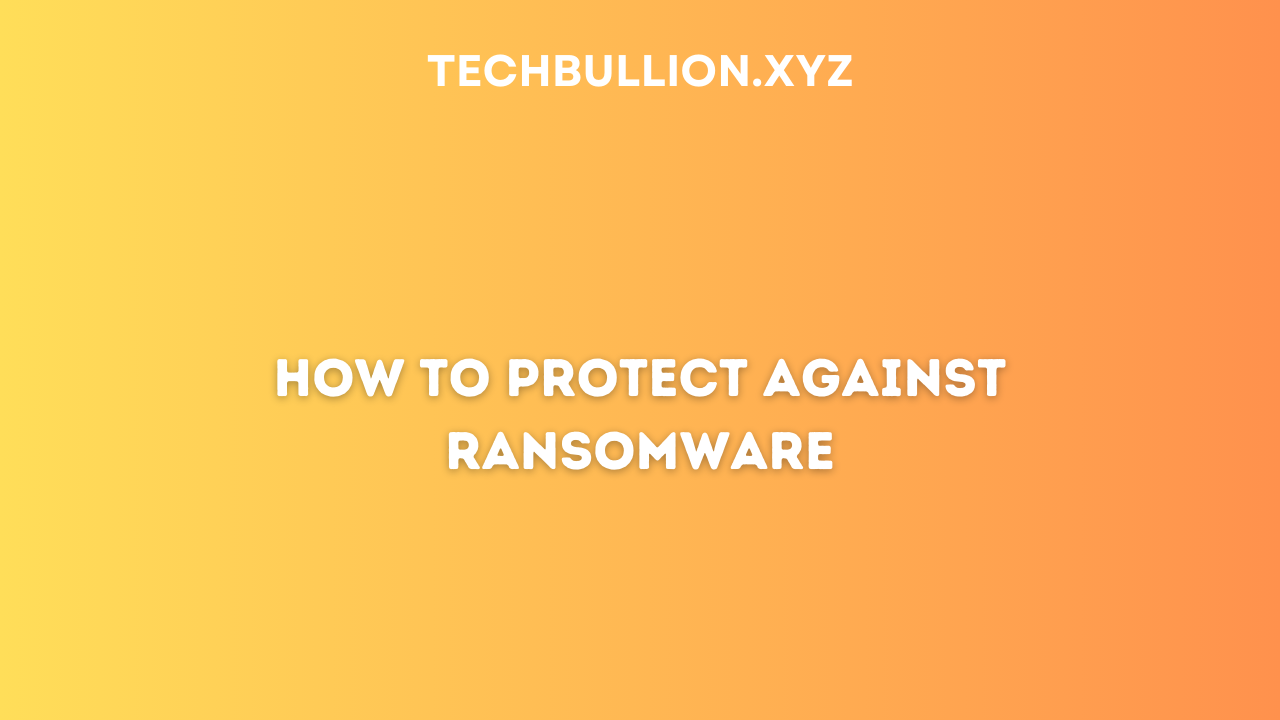Protecting your computer and data against ransomware is crucial in today’s digital landscape. Ransomware is a type of malware that encrypts your files and demands a ransom for their release. Here are essential steps to help protect against ransomware:
1. Use Antivirus and Anti-Malware Software
Install reputable antivirus and anti-malware software on your computer. These programs can detect and remove known ransomware threats. Keep the software up to date to ensure it’s equipped to handle the latest threats.
2. Regularly Update Your Operating System
Ensure your operating system (e.g., Windows, macOS) and software are updated with the latest security patches. Cybercriminals often exploit vulnerabilities in outdated software to deliver ransomware. Enable automatic updates when available.
3. Backup Your Data
Regularly back up your data to an external drive or a cloud-based service. This ensures you have a copy of your files in case they are encrypted by ransomware. Set up automatic backups and verify that the backups are functioning correctly.
4. Use Strong, Unique Passwords
Create strong and unique passwords for your accounts, and use a password manager to help you keep track of them. Ransomware may spread through compromised accounts, so strong passwords are essential.
5. Enable Two-Factor Authentication (2FA)
Enable two-factor authentication wherever possible. This extra layer of security makes it significantly harder for cybercriminals to gain unauthorized access to your accounts and devices.
6. Be Cautious with Email and Downloads
Most ransomware is delivered through phishing emails or malicious downloads. Be cautious when opening email attachments, especially if the sender is unfamiliar or the email seems suspicious. Avoid downloading files from untrustworthy websites.
7. Educate Yourself and Your Team
Educate yourself and your team (if applicable) about the dangers of ransomware. Teach them how to recognize phishing attempts, suspicious emails, and unsafe websites. Awareness is a powerful defense.
8. Use a Firewall
Enable a firewall on your computer to filter out potentially harmful incoming and outgoing traffic. Firewalls can help block known ransomware threats from infiltrating your system.
9. Limit User Privileges
On your network and devices, assign the lowest necessary user privileges to users and accounts. This limits the damage ransomware can do if it manages to infiltrate your system.
10. Install Ad-Blockers
Ad-blockers can help prevent malicious ads from delivering ransomware through malicious websites. Install a reputable ad-blocker on your web browsers.
11. Regularly Monitor Your Network
Keep an eye on your network for unusual or suspicious activities. This can help you detect potential ransomware infections early and take action to prevent further damage.
12. Disable Remote Desktop Protocol (RDP)
If you don’t use Remote Desktop Protocol, consider disabling it. Ransomware attackers often use RDP to gain access to your computer.
13. Segment Your Network
Segmenting your network can help contain ransomware infections. If one part of the network is compromised, it doesn’t necessarily give the attacker access to the entire network.
14. Plan for Ransomware Recovery
Have a plan in place for dealing with a ransomware attack. Understand the steps you should take if your data is compromised, and be prepared to contact law enforcement.
15. Invest in Security Training and Software
Consider investing in security training and software designed to specifically protect against ransomware. These solutions can offer proactive protection against emerging threats.
Ransomware attacks are constantly evolving, so staying vigilant and implementing a combination of security measures is essential for protection. Regularly review and update your security practices to stay ahead of this ever-present threat.
